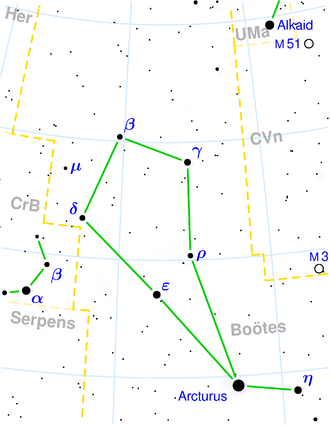NGC 5249
| Galaxy NGC 5249 |
|
|---|---|

|
|
| SDSS | |
| AladinLite | |
| Constellation | Bear keeper |
|
Position equinox : J2000.0 , epoch : J2000.0 |
|
| Right ascension | 13 h 37 m 37.5 s |
| declination | + 15 ° 58 ′ 20 ″ |
| Appearance | |
| Morphological type | S0 |
| Brightness (visual) | 13.2 mag |
| Brightness (B-band) | 14.2 mag |
| Angular expansion | 1.6 ′ × 1.2 ′ |
| Position angle | 170 ° |
| Surface brightness | 13.8 mag / arcmin² |
| Physical data | |
| Redshift | 0.025588 +/- 0.000157 |
| Radial velocity | 7671 +/- 47 km / s |
|
Stroke distance v rad / H 0 |
(342 ± 24) x 10 6 ly (105.0 ± 7.4) Mpc |
| history | |
| discovery | Wilhelm Herschel |
| Discovery date | March 21, 1784 |
| Catalog names | |
| NGC 5249 • UGC 8618 • PGC 48134 • CGCG 102-028 • MCG + 03-35-015 • 2MASX J13373751 + 1558197 • GC 3616 • H III 72 • h 1651 • SDSS J133737.49 + 155820.0 | |
NGC 5249 is a 13.2 likes bright lenticular radio galaxy from the Hubble type "S0" in the constellation Bootes the northern sky . It is estimated to be 342 million light years from the Milky Way and about 160,000 light years in diameter.
The object was discovered on March 21, 1784 by Wilhelm Herschel with an 18.7-inch reflector telescope, who described it as "eF, vS, verified with 240 power and cL".
